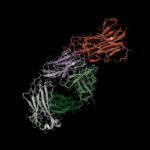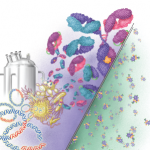ZURICH (Reuters)—Switzerland’s biggest drugmakers are clashing over cheaper copies of pricey biotech drugs—one reason why Novartis is considering selling its $14 billion stake in cross-town rival Roche.
With a copycat of Roche’s blood cancer drug Rituxan (rituximab) pending European approval, Novartis aims to muscle in on a share of sales that last year hit 7 billion Swiss francs ($7.1 billion).
But Roche is fighting back with a new medicine, Gazyva (obinutuzumab), which it contends is better than Rituxan.
This clash illustrates the Basel drugmakers’ starkly different strategies. Beyond its own new drug portfolio, Novartis has a big side bet that cheaper biosimilars from its Sandoz generics unit can grab rivals’ profits, while Roche has limited its focus to new drugs to counter such incursions.
“Does that thinking reflect at all about the Roche stake? Obviously, it certainly does,” Novartis CEO Joe Jimenez said last week, adding he would unleash “one of the best and most-potent oncology sales and medical forces” to peddle rituximab, Rituxan’s generic name, in Europe as early as next year.
Novartis amassed one-third of Roche’s voting stock in the early 2000s during a failed merger bid. As Jimenez finally mulls an exit, he has abandoned demands that Novartis get a premium for the stake.
He has not put a timeframe on the potential sale, but analysts think it increasingly likely as the battle between the firms intensifies.
The money raised could bolster Novartis’ hand, while Roche will be hoping the sale does not drive down its share price. Analysts think the stock is likely to appeal to institutional investors rather than a potential bidder as Roche’s founding family retains a controlling stake.
Changing Assumptions
Roche declined to comment on Novartis’ plans. But it remains confident its scientists can come up with new, better drugs faster than biosimilars from rivals, such as Novartis can loot older drugs’ revenue.
A study released last week showing Gazyva was superior to Rituxan for follicular lymphoma “is a perfect example of our commitment to maintain our focus on developing innovative medicines for people facing difficult diseases,” said Roche pharmaceuticals head Dan O’Day on Monday in an emailed response to questions.
As Roche musters new data on its next-generation drugs, Jimenez last week fired off a warning: Biosimilar copies will likely sell at discounts of as high as 75% vs. the original product, far deeper than Novartis originally anticipated.
The trend emerged in Europe last year, with steep discounts offered on copies of Johnson & Johnson and Merck & Co’s co-branded Remicade (infliximab), for rheumatoid arthritis and Crohn’s disease.
What he loses on price, Jimenez now plans to make up for in volume. “If you look at the absolute return that we project, we’re essentially on [target] or higher, even with those assumptions,” he says.
Motivation to Sell
Novartis has many motivations to unload its Roche shares.
For one, Novartis is building its cancer franchise after its 2015 acquisition of GlaxoSmithKline assets, so the stake in Roche, the world’s biggest maker of oncology medicines, risks putting too many eggs in one basket.
Profit margins on Roche cancer drugs may narrow, too, if Novartis’s biosimilar strategy succeeds.
“The decision to divest its Roche stake is partly motivated by biosimilar dynamics,” Leerink analyst Seamus Fernandez told investors.
Proceeds from the shares would replenish Novartis’s acquisitions warchest as Jimenez seeks “bolt-on” targets of up to $5 billion, or possibly larger, as prices for takeovers come down.
Also, inter-company tensions may escalate should Roche’s lawyers seek to stall Novartis’s rituximab copy in the courts. Such a lawsuit would make for uncomfortable times in Basel.
The legal threat is real: Xarxio (filgrastim-sndz), Novartis’s version of Amgen’s blockbuster that prevents infections in cancer patients, hit the U.S. market last year only after beating back a legal challenge.
Jimenez said the aggressive legal strategies of drug originators to delay would-be copies have replaced government approval as the biggest stumbling block to speedy U.S. biosimilar introductions.
“You’re seeing less regulatory time, more blocking,” he said. “Eventually, as the legal battles are won, you’re going to see a good business in the U.S. with biosimilars.”



